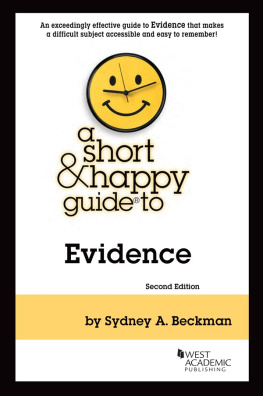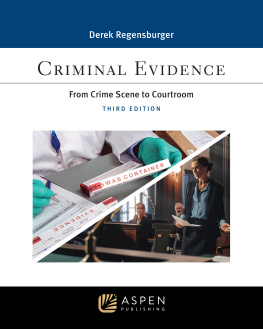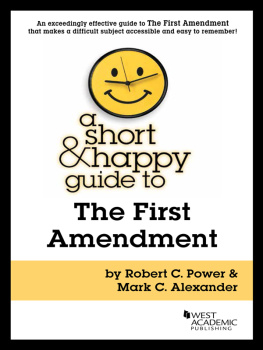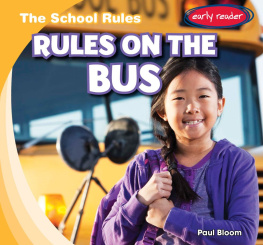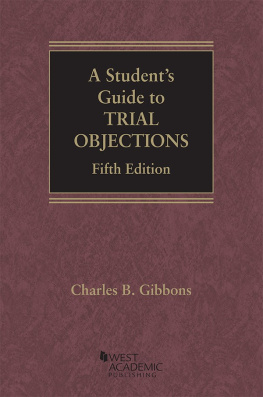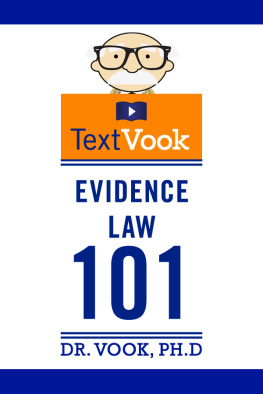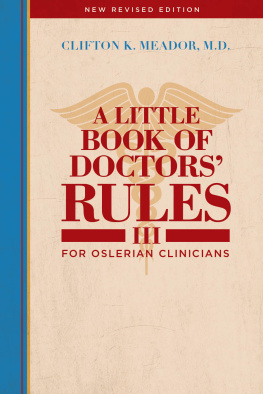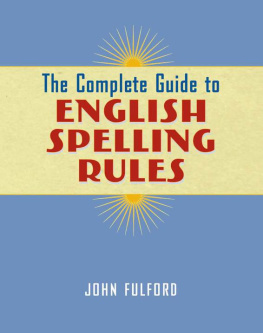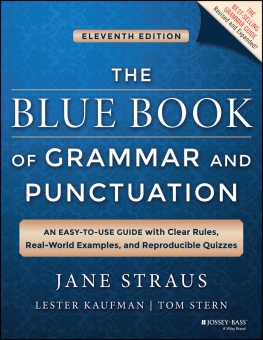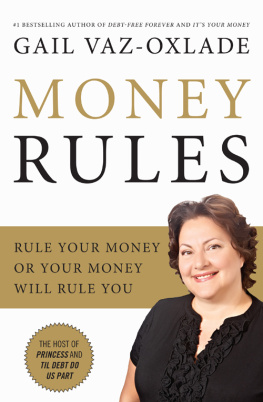West Academic Publishings Emeritus Advisory Board
Jesse H. Choper
Professor of Law and Dean Emeritus
University of California, Berkeley
Yale Kamisar
Professor of Law Emeritus, University of San Diego
Professor of Law Emeritus, University of Michigan
Mary Kay Kane
Late Professor of Law, Chancellor and Dean Emeritus
University of California, Hastings College of the Law
Larry D. Kramer
President, William and Flora Hewlett Foundation
James J. White
Robert A. Sullivan Emeritus Professor of Law
University of Michigan
West Academic Publishings Law School Advisory Board
Joshua Dressler
Distinguished University Professor Emeritus
Michael E. Moritz College of Law, The Ohio State University
Meredith J. Duncan
Professor of Law
University of Houston Law Center
Rene McDonald Hutchins
Dean and Joseph L. Rauh, Jr. Chair of Public Interest Law
University of the District of Columbia David A. Clarke School of Law
Renee Knake Jefferson
Joanne and Larry Doherty Chair in Legal Ethics &
Professor of Law, University of Houston Law Center
Orin S. Kerr
Professor of Law
University of California, Berkeley
Jonathan R. Macey
Professor of Law,
Yale Law School
Deborah Jones Merritt
Distinguished University Professor,
John Deaver Drinko/Baker & Hostetler Chair in Law
Michael E. Moritz College of Law, The Ohio State University
Arthur R. Miller
University Professor and Chief Justice Warren E. Burger Professor of Constitutional Law and the Courts, New York University
Grant S. Nelson
Professor of Law Emeritus, Pepperdine University
Professor of Law Emeritus, University of California, Los Angeles
A. Benjamin Spencer
Dean & Chancellor Professor of Law
William & Mary Law School

Evidence
Second Edition
Sydney A. Beckman
Professor of Law
A SHORT & HAPPY GUIDE SERIES

The publisher is not engaged in rendering legal or other professional advice, and this publication is not a substitute for the advice of an attorney. If you require legal or other expert advice, you should seek the services of a competent attorney or other professional.
a short & happy guide series is a trademark registered in the U.S. Patent and Trademark Office.
2018 LEG, Inc. d/b/a West Academic
2021 LEG, Inc. d/b/a West Academic
444 Cedar Street, Suite 700
St. Paul, MN 55101
1-877-888-1330
Printed in the United States of America
ISBN: 978-1-63659-286-2
iii
Acknowledgments
This Second Edition of the Short and Happy Guide to Evidence is my third book for West Academic. I have also authored Evidence: A Contemporary Approach (four editions with Susan Crump and Fred Galves) and Evidence: Logic Maps (second edition forthcoming) . I have had the pleasure of working with many individuals at West Academic for more than a decade. I want to thank all of them and specifically thank Louis Higgins, Greg Olson, Staci Herr, Megan Putler, and Sarah Bowser Agan for all of their assistance over the years with my various projects and listening to my crazy (I mean brilliant) ideas.
This Second Edition was enhanced by the work of my research assistants Julia Dulko and Kendal Walker. Thank you for all you did!
I must also thank my studentsthose in the past, those in the present, and those yet to come. It is the love of teaching, and watching them learn, that led me down this career path. To you I owe the greatest debt.
Sydney A. Beckman
Professor of Law
Knoxville, Tennessee
August 2021
Copyright Attributions
Many of the icons used herein are Copyright, and used courtesy of, Freepik from www.flaticon.com .
Other icons, unless noted, used under paid license. All graphics are either original or used under paid license.
v
Table of Contents
Testimonial, Documentary, Demonstrative, or
Real
Revisiting the Process to Determine
Admissibility
vi
vi. Sales of Similar Property
b. To Negate a Contention of Undue
Delay
c. To Prove an Effort to Obstruct a
Criminal Investigation or Prosecution
D. Discretionary Exclusion of Relevant Evidence Rule
[403]
vii
Chapter IV.
(1) Waiver Based on Failure to
Object
(2) Waiver Based on Previous
Testimony
ii. Rationally Based on the Witnesss
Perception
viii
ii. The Experts Opinion Must Help the Trier of Fact
iii. The Experts Opinion Must Have a Proper
Basis
b. Reliable Principles and Methods
[702(c)]
c. Reliably Applied to the Facts of the
Case [702(d)]
ix
(2) When the Witness Has Been Impeached on Other Non-Character Grounds
A Victims Trait of Peacefulness in a Homicide
Case [404(a)(2)(C)]
Rule 608: A Witnesss Character for Truthfulness
or Untruthfulness
x
iii. Limitations Based on Pardon, Annulment, or Certificate of Rehabilitation [609(c)]
ii. The Exceptions in Criminal Cases
[412(b)(1)]
(1) Statements with Legal
Significance
(2) Statements Made During the
Course of a Criminal Act
xi
iii. Impeachment (Prior Inconsistent
Statements)
D. Examples of Statements That Are and Are Not
Hearsay
A Declarant-Witnesss Prior Statement
[801(d)(1)]
xii
B. Strong Exceptions to the Rule
iv. Distinction Between the Present Sense Impression [803(1)] and the Excited
Utterance [803(2)]
Statement Made for Medical Diagnosis or
Treatment [803(4)]
xiii
iii. Example
(1) A Statement About the
Declarant
(2) A Statement About Another
Person
xiv
v. Statement Offered Against a Party That Wrongfully Caused the Declarants Unavailability [804(b)(6)]
C. Hearsay Versus the 6th Amendment to the United
States Constitution
xv
Photographs
When the Parol Evidence Rule Excludes
Evidence
i. A Contract That Is Ambiguous or
Incomplete
iii. The Communication Relates to That
Purpose
iv. The Communication Is Made in
Confidence
xvi
Physician-Patient
a. Preponderance of the Evidence
( > 50%)
b. Clear and Convincing Evidence
( 75%)
c. Beyond a Reasonable Doubt
( 9095%)
xvii
Presumptions in Criminal Cases
xix
Prologue
I love evidence. To me it is logical and useful. As a law student, being a trial lawyer was not my desire. Nevertheless, I became one; and what I found was that those lawyers who knew the rules really knew the rules and how to use themalways had a distinct advantage even when the facts were not in their favor. Textbooks are designed with a particular purpose. Usually, that purpose is to teach with the aid of an instructor. This book, on the other hand, is not designed for that purpose. This book is designed to make you understand evidencefor your exams, for the bar examination, and for trial.
A note with regard to citations: Throughout this book you will find citations to cases and rules. However, the vast majority of the references to cases have been omitted. The reason for these omissions is that few students would have the need to look up the actual case. The additional case references would clutter the book, increase its length, and have a negative impact on the aesthetics; therefore, the decision was made to omit, rather than include, the references.
If you love the book, like the book, have thoughts, suggestions, or questions, please drop me a line at .

